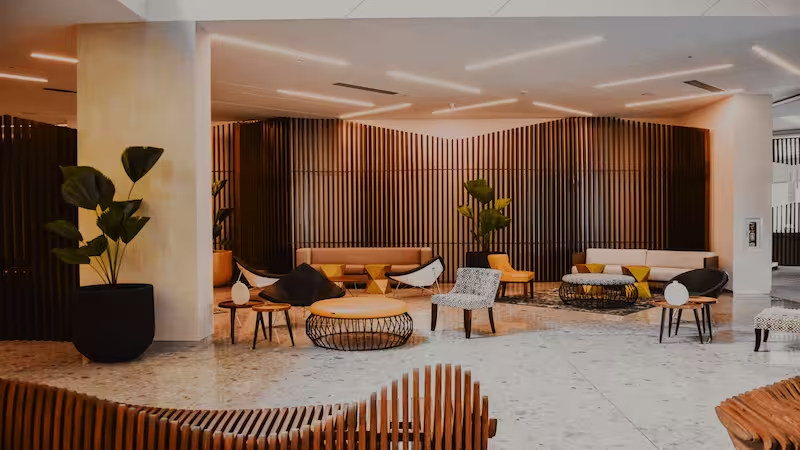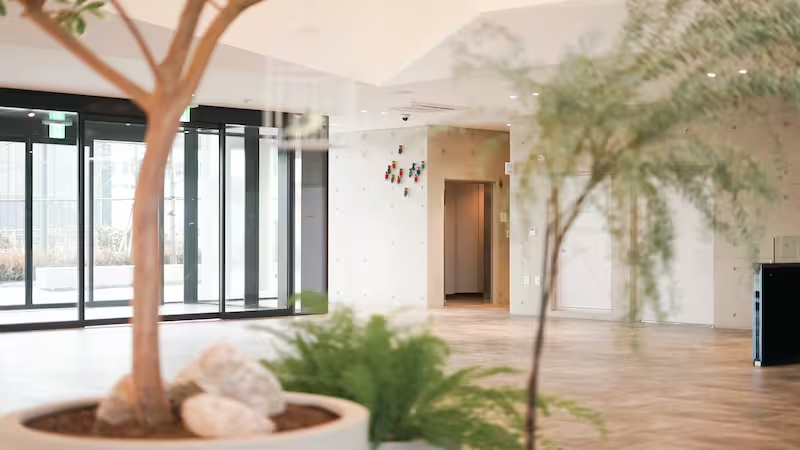
Table of Content
The largest shopping malls today operate more like cities than retail centers. They span millions of square feet, attract tens of millions of visitors, and bring together retail, dining, entertainment, and services under one roof. Managing these spaces and keeping customers engaged requires smart infrastructure, and digital signage has become a core part of that.

Interactive directories help people find their way. LED video walls turn public areas into promotional and storytelling spaces. Real-time updates keep shoppers informed and traffic flowing. For operators, these systems also unlock new advertising revenue and provide data that can improve everything from leasing to layout.
This article looks at ten of the world’s largest malls and how they use digital signage to solve operational challenges, enhance the visitor experience, and stay competitive in a changing retail environment.
Top 10 Rankings Shopping Malls
1. The Dubai Mall (Dubai, UAE)

The Dubai Mall is one of the world’s most visited shopping centers that welcomes more than 80 million people annually. With around 12 million square feet of total space and more than 1,200 stores, it includes everything from high-end boutiques to an Olympic-sized ice rink and the world-famous Dubai Aquarium.
To manage its complex layout, the mall introduced a Smart Directory system made up of interactive touchscreen kiosks to help visitors find stores, dining options, and services, and then provide on-screen navigation to get there quickly.
The screens also feature advertising panels that show promotions when they’re not in use. These displays deliver brand campaigns and event coverage while also generating revenue. The mall tracks usage data from the directories to understand traffic patterns and improve store placement, plan events in high-traffic zones, and even assist with leasing decisions.
2. The Avenues Mall (Kuwait City, Kuwait)
The Avenues Mall is the largest shopping destination in Kuwait and one of the biggest in the Middle East, covering over 13 million square feet. It is designed as a series of twelve districts, each with its own architecture and atmosphere, ranging from modern luxury to traditional markets. The layout creates a unique experience but also makes navigation more complex for visitors.
The Avenues is famous for experimenting with experiential digital signage that feels more like something you’d find in an art gallery or even a theme park. A perfect example is “Electra,” which is part of one of the mall’s newer expansions. It’s a huge 360-degree, 600 m² curved LED veil, with an interactive LED floor that makes you feel like you’ve walked straight into a moving, living piece of art.
For the Avenues Mall, this installation creates the kind of memorable experiences people want to share, which means more engagement, more social media buzz, and more reasons for shoppers to stick around. They also open up premium advertising opportunities — brands can launch products or host seasonal events in a way that feels bigger, flashier, and way more exciting than a regular ad.
The mall’s digital signage is centrally controlled. They can update everything instantly across the property at a moment’s notice.
3. IOI City Mall (Putrajaya, Malaysia)
IOI City Mall is the largest shopping mall in Malaysia and one of the biggest in the world, with a total floor area of about 8.8 million square feet. It combines retail, leisure, and family attractions, including an Olympic-sized ice skating rink, an indoor adventure park, a 13-screen cinema, and a rooftop exhibition space known as IOI City Farm.
To help visitors move through its sprawling layout, the mall installed 55-inch and 65-inch standing kiosks at main entrances and junctions. These touchscreens function as all-in-one directories that let people search for stores or services and get clear directions on-screen. The kiosks connect to a cloud-based system, which allows real-time updates to store listings, maps, and promotional content without the delays of printed materials.
Big retail names inside the mall are also stepping up their digital game. Decathlon, for example, installed a transparent LED display at its IOI City Mall store — a 1m by 3m screen with a 3.9–7.8mm pixel pitch. The display is subtly integrated into the store’s design to complement the space without overwhelming it.
4. SM Mall of Asia (Pasay City, Philippines)
SM Mall of Asia is one of the largest malls in the Philippines and a landmark shopping destination in Southeast Asia. It spans more than 6.3 million square feet, stretching across multiple buildings on Manila Bay. With over 3,500 stores, a massive department store, a supermarket, cinemas, and even a tram system, the mall blends retail, entertainment, and leisure on a grand scale.
One of its most striking digital features is the MOA 360 LED— a cylindrical display column standing 15 meters tall at the heart of the mall. Wrapped in 170 square meters of LED screen, it plays high-definition visuals viewable from every angle of the atrium. The display is used for product campaigns, animated visuals, and special occasion features.
On the advertising front, beyond the giant LED pillar, MOA has numerous video walls and LED billboards. In fact, the Mall of Asia Arena next door sports what was reported as the Philippines’ largest LED billboard, the “Mall of Asia Arena Mesh,” wrapping around the arena’s facade. Within the mall, retail zones have overhead LED banners that loop retail promotions and event announcements.
5. Starfield COEX Mall (Seoul, South Korea)
Starfield COEX Mall in Seoul holds the title of the world’s largest underground shopping mall, spread across a single level of about 1.65 million square feet. Located in the city’s Gangnam district beneath the COEX Convention and Exhibition Center, it includes over 250 stores, a cinema, an aquarium, and the well-known Starfield Library — a public reading space with floor-to-ceiling bookshelves.
The most talked-about digital signage at COEX Mall isn’t inside it, but above it – the colossal SMTown COEX Square LED billboard on the exterior of the COEX Artium building. This curved LED screen, measuring about 80 meters wide by 20 meters tall, is South Korea’s largest digital billboard. In 2020, it gained international fame with a public art display called “The Wave,” an anamorphic 3D visual of a giant wave crashing inside a virtual glass tank. Videos of this realistic 3D wave illusion went viral, showcasing the screen’s capability to deliver truly immersive content
The COEX wave is a real example of how digital out-of-home media can turn a mall into a global destination. The screen runs about 18 hours a day, playing K-pop videos, brand ads, and digital art to the crowds that gather outside.
For Starfield COEX Mall, it’s a huge marketing win. It drives foot traffic (people come to COEX just to see the screen content and then end up shopping or dining), and it generates significant ad revenue from companies that want to use one of the highest-profile digital billboards in Asia..
6. Mall of America (Bloomington, USA)
Mall of America is the largest shopping mall in the United States, with over 5.6 million square feet of space and more than 520 stores. Located in Minnesota, it’s known for combining shopping with major entertainment features, including the indoor amusement park Nickelodeon Universe, an aquarium, mini-golf, and multiple theaters. It also hosts attached hotels and an exhibition center, making it a destination in itself.
To help visitors navigate the four-level layout, the mall deployed over 100 digital directories starting in 2016. These touchscreen kiosks are placed throughout the mall and run a custom navigation interface. Guests can search by store name, category, or even specific brands, and receive turn-by-turn walking directions. The system also supports text messaging — users can send the directions to their phones and follow them on the go.
Each kiosk includes an ADA-compliant mode and supports nine languages to ensure accessibility for all visitors. The network logs millions of interactions each year, giving mall management detailed insight into popular searches and traffic patterns. This data is used to adjust store placements and event planning.
7. West Edmonton Mall (Edmonton, Canada)

West Edmonton Mall is the largest shopping mall in North America by retail space, with over 5.3 million square feet in total and about 3.8 million square feet of leasable space. It’s more than just a mall — it includes an indoor amusement park, a water park, an NHL-sized skating rink, mini golf, two hotels, and over 800 shops and services. It draws more than 30 million visits each year.
West Edmonton Mall runs a massive digital signage network to help manage its enormous space. Using a centralized system, mall staff can control content on hundreds of screens across the property.
In the food courts, for example, digital menu boards are connected to the same system. Each outlet has its own screens, and staff can update prices, promotions, and menu items in real time through a central content manager.
Out in the mall’s corridors and public spaces, large displays show everything from mall promotions to ads for attractions to wayfinding directions. Screens in the on-site hotels and convention center post meeting schedules and navigation info, all updated easily through the same software.
This unified setup gives West Edmonton Mall a lot of flexibility. They can push instant updates across every display, keep visitors in the loop with interactive maps and event listings, and offer a more dynamic, engaging experience overall.
8. CentralWorld (Bangkok, Thailand)
CentralWorld is one of the largest shopping centers in Asia, with around 5.9 million square feet of space. It spans multiple levels and includes more than 500 stores, 100 restaurants, two department stores, cinemas, a kids’ playground, and a major outdoor plaza that hosts concerts, festivals, and Bangkok’s New Year countdown celebrations.
One of the mall’s most iconic features is its curved digital facade. Stretching over 180 meters, the LED screen wraps around the building and anchors the entire Ratchaprasong district visually. Known as the "Panoramix," the screen covers about 3,790 square meters and was developed with multimedia studio Moment Factory.
The Panoramix is a full-on multimedia experience. It plays synchronized brand campaigns, seasonal displays, and live event coverage, and even hosts a special evening show called "Colors of Bangkok," that showcases animation, live action, lights, smoke, and lasers.
9. Istanbul Cevahir
Considered one of Europe's largest shopping malls Istanbul Cevahir Shopping and Entertainment Centre opened in 2005. It spans over 5 million sq ft across six floors and houses over 200 brands, making it a significant player in Turkey's organized retail industry. It’s strategically positioned in Istanbul and features renowned national and international brands such as Decathlon, Zara, LCW, and Marks & Spencer. Beyond the shopping experience, visitors can enjoy 12 cinema screens, an indoor roller coaster, and a variety of dining options.
Many individual retailers inside the mall have their own digital screens, where they showcase products, promote special offers, and share brand messages to catch the attention of shoppers.
The mall is also in the middle of a major redesign by Design International, with plans to modernize its interiors and create a more updated, welcoming experience.
10. Iran Mall in Tehran, Iran
Right now, the Iran Mall holds the title of being the biggest mall in the world based on its total ground coverage area. It already has an expanse of 14.5 million sq ft (1.35 million m2) in its first phase of construction. It has an impressive gross leasable area of 3.23 million sq ft (300,000 m2) and transcends the conventional retail space by offering a multi-use oasis with gardens, cultural collections, and a colossal library that occupies three floors and houses over 45,000 volumes of books, manuscripts, and historical documents.
The statues within the library pay homage to three influential figures in Persian history, adding a touch of cultural richness to the complex.
To help visitors navigate the enormous layout, the mall deployed a network of digital wayfinding kiosks across multiple levels. These interactive screens let people search by store or category and get step-by-step directions from wherever they are. The layout updates instantly when new areas or tenants open.
The Right Signage Platform Makes All the Difference
If you’re operating a retail space or managing a location inside one, now is the time to see how digital signage can support your goals. Look Digital Signage makes it easy to get started with a platform built for real-world retail needs.
It’s quick to deploy, easy to manage remotely, and gives you full control over your content from anywhere. Update screens instantly, schedule promotions across locations, and track performance with simple, intuitive tools.
Start your 14-day free trial today and see what your screens can do with the right platform behind them.




.avif)



